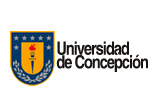Graduate Thesis of Yissedt Lara
 | Program | PhD in Applied Sciences with mention in Mathematical Engineering, Universidad de Concepción |
|---|---|---|
| Enrollment Year | 2017 | |
| Senior Year | 2022 | |
| Thesis Title | Parameter identification and applications of phenomenological and mechanistic models of epidemic outbreaks | |
Thesis Summary:This thesis is focused on models given by ordinary differential equations (ODEs) to describe the temporal dynamics of epidemic outbreaks. Such studies and applications involve the use of databases, statistical tools, and numerical simulations. The current pandemic situation of the spread of the SARS-Cov2 virus has motivated us to dedicate part of this work to the modeling of COVID-19 in Chile and Colombia. Specifically, the work considers two types of epidemiologic models to capture the dynamics of growth and spread of infectious diseases. Within these two types, we have phenomenological models and mechanistic models. Specifically to the first type of model we develop a comparative analysis and an analysis of the growth curves obtained for the case of COVID-19 in Colombia. On the other hand, the second type of model is utilized to describe the initial outbreak of COVID-19 in Chile. As a quick overview of the thesis, we began by studying four different phenomenological models, which we compared using 37 databases and different statistical measures to define which of these models better captures the different dynamics, such development is exposed in Chapter 1. In Chapter 2, to complement this comparative analysis, we extended the study using synthetic databases and statistical tools to see which model is closer to the others, trying to capture the advantages or disadvantages of each when fitting growth curves. Chapter 4 is developed with COVID-19 data from Colombia. Various phenomenological models are applied to capture the growth curves to national and regional levels, and then some short-term forecasts are obtained. Besides, from the Colombia epidemic curves generated by GGM, the effective reproduction number $R_t$ is computed. All this is to understand the transmission dynamics of COVID-19 in Colombia in both the early and final phases. In Chapter 3, we propose a compartmental mechanistic model inspired by the initial spread of COVID-19 in Chile, to incorporate an identifiability study, using synthetic and regional Chilean data. In Chapter 5 we summarize the main conclusions obtained in the previous chapters and the topics that could be addressed in future works. Finally, in Appendices A and B, we include Matlab programs, figures, and tables that complement different results from our work. In summary, the general objective of the thesis is divided into the following four specific objectives that define the content of each of the developed chapters; The first objective of this thesis is to compare the most common phenomenological models to capture epidemic growths and see which are the most versatile to capture these outbreaks and see if the ability to fit well depends on the number of parameters that define each model. The second objective of this thesis is, having already established a comparison between different phenomenological models for the adjustment of real data, to quantify the distance between two models as a measure of differences in the dynamics that each model is capable of generating. The third objective involves the application of phenomenological models to the study of the epidemic growth dynamics presented in Colombia for the COVID-19 disease to analyze the growth rates and the short-term forecasts, also involving a study to compare the effective reproduction numbers obtained both at the national and regional levels. The fourth and final objective is to propose an identifiability analysis for the parameters of a mechanistic model by compartments that study the propagation dynamics in the Chilean regions for the SARS-CoV2 virus, considering the initial period of the outbreak and the quarantine measures independently applied in each Chilean region. | ||
| Thesis Director(s) | Raimund Bürger, Gerardo Chowell-Puente | |
| Thesis Project Approval Date | 2019, April 08 | |
| Thesis Defense Date | 2022, June 15 | |
| Professional Monitoring | ||
| PDF Thesis | Download Thesis PDF  | |
ISI Publications from the ThesisAyotomiwa Ezekiel ADENIYI, Juan M. BANDA, Raimund BüRGER, Tsira CHAKHAIA, Gerardo CHOWELL, Isaac CHUN-HAI FUNG, Sushma DAHAL, Alexander EWING, Xinyi HUA, Alexander KIRPICH, Leidy Y. LARA-DIAZ, Ruiyan LUO, Sylvia K. OFORI, Olaseni PRINCE, Argita D. SALINDRI, Eunha SHIM, Pavel SKUMS, Anuj SRIVASTAVA, Amna TARIQ: An investigation of spatial-temporal patterns and predictions of the coronavirus 2019 pandemic in Colombia, 2020–2021. Plos Neglected Tropical Diseases, vol. 16, no. 3, article: e0010228 (33pp), (2022). Raimund BüRGER, Gerardo CHOWELL, Leidy Y. LARA-DIAZ: Measuring differences between phenomenological growth models applied to epidemiology. Mathematical Biosciences, vol. 334, article: 108558 (15pp), (2021). Raimund BüRGER, Gerardo CHOWELL, Leidy Y. LARA-DIAZ: Comparative analysis of phenomenological growth models applied to epidemic outbreaks. Mathematical Biosciences and Engineering, vol. 16, 5, pp. 4250-4273, (2019). |
||
<< Back to list of Graduate Thesis.

